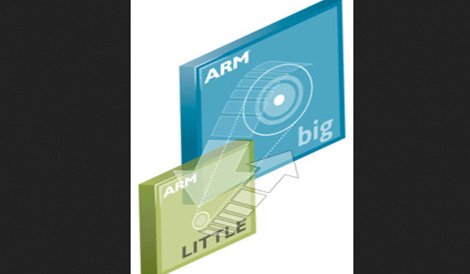ARM wants to accelerate the introduction of its 64-bit ARMv8 architecture and is introducing a new platform standard to do.
It said the ARM Server Base System Architecture (SBSA) specification for its ARMv8 64-bit server will help deployment and innovation as data center operators move towards new low-power, low-cost architectures.
Standards, it believes, will not only drive innovation for solutions in data center applications but enable greater portability between ARM-based platforms.
ARM director of server programs Jeff Underhill said the move towards cloud is pushing data center operators into areas such as workload optimization, using SoC architectures, to drive efficiencies.
“Cloud scale is becoming a key consideration – but how do you manage that sheer volume?” Underhill said.
“This is where the ARM model of licensing IP and allowing partners to augment with their blocks of IP, whether it is networking, GPUs, or integration of fabrics, is going to be key.”
ARM said it will be the owner and steward of its new server platform standard, which so far has buy in from Canonical, Linaro, Microsoft, Red Hat, SUSE, Dell, Citrix and HP and a range of silicon providers.
Just how much IP ARM gives away to its partners, OEMs and otherwise, however, will be carefully considered, according to Underhill.
“We have to strike a balance between standardizing enough of the platform for standard software so people can easily deploy and maintain business servers but not at risk of stifling the innovation and choice that is fundamental to our proposition,” he said.
What ARM will release as part of its standards program will be available in the public domain.
Underhill said ARM sees the initiative as integral to staving off fragmentation that threatens the market as more software is offered as part of these new server architectures making their way from web-scale operations into the enterprise.
“Imagine an installation in a data center where racks and racks of AppliedMicro and AMD ARM-based solutions are used and you have a new patch released for security,” Underhill said.
“I don’t want to think which kernel belongs to which web server. I want a standardised operating system I can deploy all these platforms on so I don’t have to worry when I am rolling out these patches,” Underhill said.
AppliedMicro has already made its X-Gene system which uses ARM processors compliant with SBSA.
AppliedMicro CEO Dr Paramesh Gopi said that bringing together OS vendors, server manufacturers and silicon providers to work cohesively provides a fully inter-operable standard platform, and fosters innovation “resulting in compelling server solutions”.
To start with, the main focus of the standards body’s work, according to Underhill, will be around the OS, with a vision of a single OS image that can work across all platforms.
“It will be about OEMs and ODMs saying they have confidence in selecting an operating system of choice, or the customer doing that, and no matter what solution they are targeting, the end users can choose the best silicon for their needs, and an operating system they know and love.”
He said ARM will be building on partnerships already established with 64-bit architectures from the storage and networking space to drive efficiencies at the chip level.
“And by getting these standards out there it will essentially ease the adoption, deployment and management of these servers – it will be another barrier of entry knocked down,” Underhill said.
ARM also has plans in place to push its standards further up the stack.
“This is very much a hardware spec for the operating system and engineers at the moment but there are opportunities further up the stack to align partnerships to ease things going forward,” Underhill said.
One area he said ARM is looking into is the mobile communications market which could pass open source software developments back to the ARM architecture.
“As we drive standards, they can help us get them upstream, and community members may see something that could be done by us in a better way, so they could feed back that information to ARM,” Underhill said.

